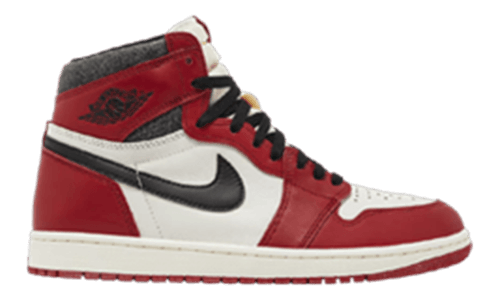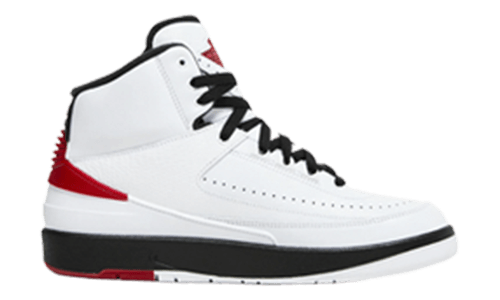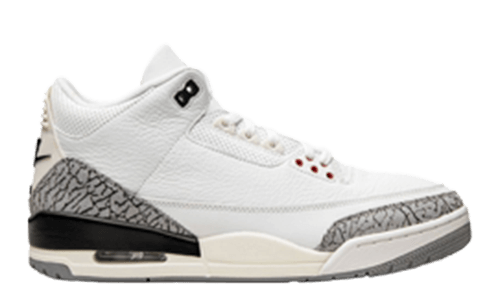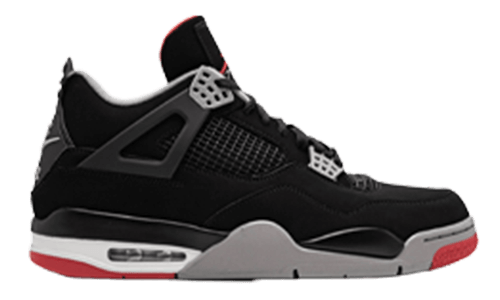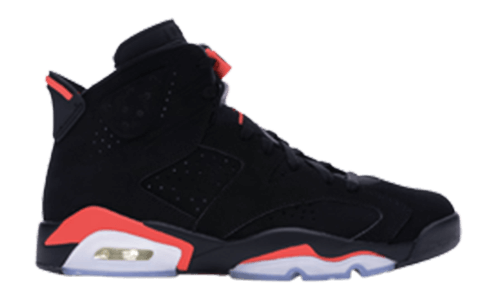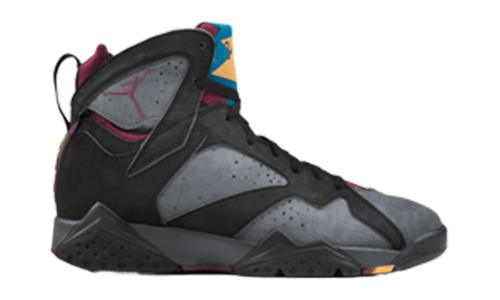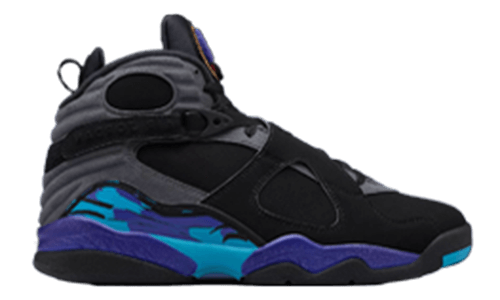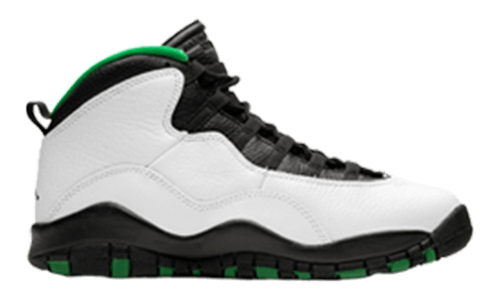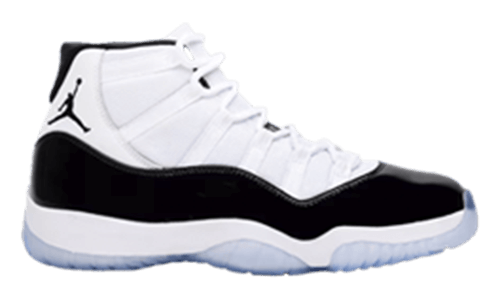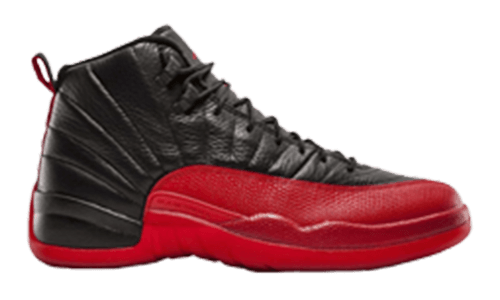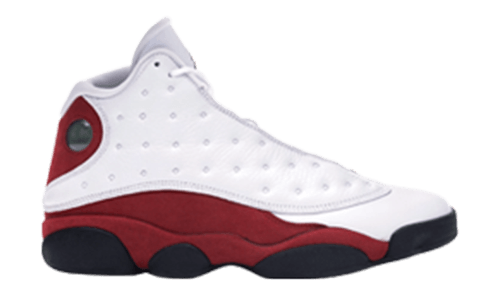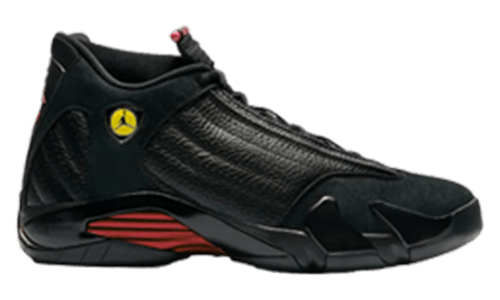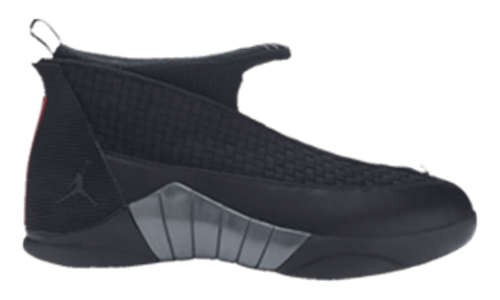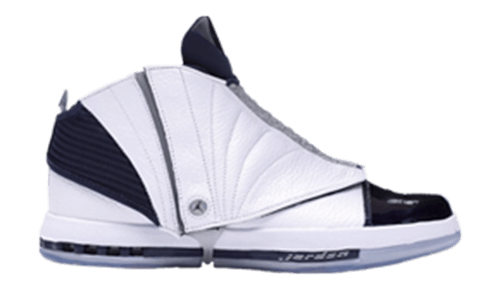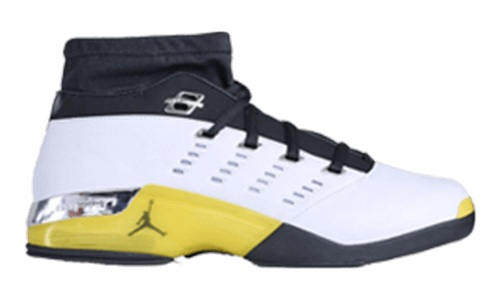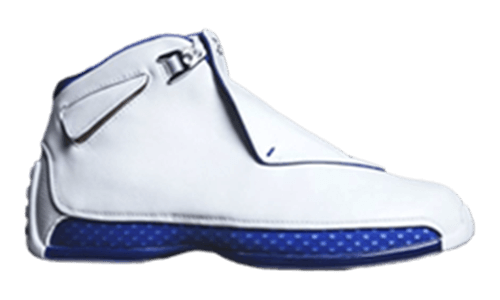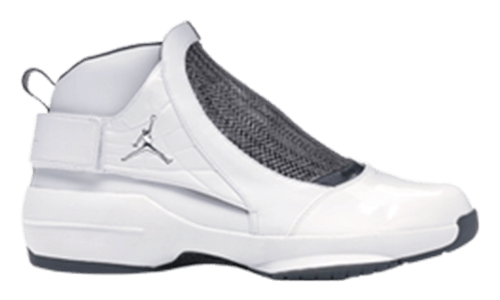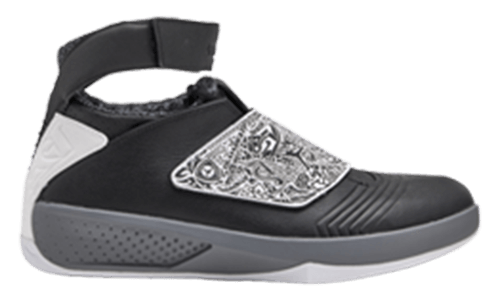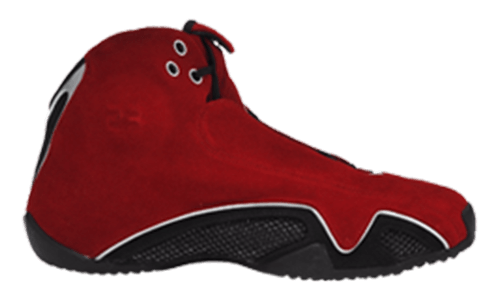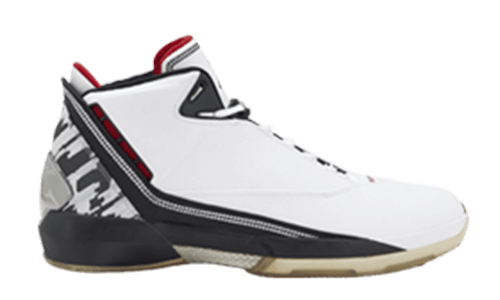
Air Jordan History
It's gotta be the shoes!
Since the iconic Air Jordan 1 debut in 1985, this line of trainers has redefined sports culture and street style. Each model has left an indelible mark, fusing design innovation, cutting-edge technology and the unbeatable essence of Michael Jordan. Whether you're looking for a timeless classic or the most modern and revolutionary versions, here you'll find the entire history of the Jordan, from its origin to the present day. Join the legacy.

Jordan 1
1985
The design of the iconic Air Jordan I fused elements of Nike's catalogue and created a unique style. Their structure and panelling were not only aesthetically pleasing, they made a fashion statement. With vibrant colours inspired by the Chicago Bulls, these shoes told stories through every detail. The legend of their ban has fuelled their mythical status in sneaker culture. Over time, the Air Jordan I has evolved with multiple versions, including one for golfers, showcasing its adaptability. Their impact has transcended basketball, being adopted also by skateboarders, such as Lance Mountain, who considered them perfect for skateboarding. In 1985, Michael Jordan was not only revolutionising style on the court, but also creating an emotional bond with his fans, connecting basketball with those who wear these shoes to express their love for the sport.

Jordan 2
1986
The Air Jordan II marked a milestone in the basketball world by fusing Italian excellence and high-flying style. Hailing from the workshops of Italy, these shoes, designed by master craftsman Bruce Kilgore, not only represented a radical departure from the first Jordan model, but also symbolised elegance at its finest. Made with premium leather and a synthetic lizard texture, each pair was a unique masterpiece. The bold decision to remove the Nike emblem generated controversy, but it also marked MJ's growing independence, uniting fashion with an iconic statement.

Jordan 3
1988
1987 marked a crucial chapter in the history of the Air Jordan. With the alliance at a crossroads after the cold reception of the AJII, the pressure to renew Michael Jordan's contract with Nike was palpable. The mid-cut silhouette wasn't just a pair of shoes, it was a moving work of art. Tinker Hatfield managed to capture the essence of street culture and fused it with the elegance of basketball. The incorporation of Visible Air technology, borrowed from the first Air Max runner, into the sole was simply groundbreaking, bringing to life a revolution in athletic footwear. On the urban stage, the Air Jordan III resonated like a symphony, fusing the passion of basketball with the street vibe and pulsating energy of music. These shoes were not just a shoe, they were the soundtrack to an era, ushering in a legacy that lives on in the hearts of streetwear and music culture lovers.

Jordan 4
1989
Following the resounding success of the Air Jordan III, Tinker Hatfield took his genius to the next level, constantly pushing the boundaries of innovation. The Air Jordan IV, with rubber side nets and wraparound ankle ‘wings’, not only offered exceptional performance, but also boasted an advanced, technological profile. Tinker Hatfield's masterful design not only excelled in performance, but also left the competition behind in visual terms. Beyond being shoes, the Jordan IV became a statement of style and technology fused into a masterpiece. These shoes wrote their own history in the world of basketball and lifestyle.

Jordan 5
1990
Tinker, the designer of the Jordan 5, was always comparing Jordan to aeroplanes, and especially Jordan's way of hovering in the air and doing any grinding or action that compared him to fighter planes. That's why, the designer was inspired by the front of World War II planes, highlighting the shark teeth in the midsole and making the tongue higher and more prominent, the latter to give it a more aggressive touch. Added to this, 3M Scotchlite reflective tongues and translucent rubber ‘frost’ soles, which are iconic features of the Air Jordan's design and aesthetic. An important detail that boosted the presence and visibility of this pair was their stellar appearance in ‘The fresh prince of bel air’, coupled with a constant Mars Blackmon campaign.

Jordan 6
1991
Jordan is such a passionate car lover, especially of exotic cars, that for Tinker this served as a creative influence. That's why, for these Jordan VIs, Tinker took inspiration from the Porsche 964 Turbo. The rubber tongue and the heel puller are two very striking elements that both refer to the Porsche's spoiler. The reinforced toe area was kept completely clean, which was one of Jordan's requests. With the Air Jordan VI Jordan dominated and did what he wanted during the playoffs, and with which he won the coveted ring, confirming his dominance in both in-game and off-court scenarios.

Jordan 7
1992
In 1991, Tinker took inspiration from the Nike Air Huarache for the design of the Air Jordan VII. In these AJVIIs, Nike's air chambers are located inside the outsole, giving them a more aesthetic and dramatic look, but keeping their agility and speed intact. The patterns that appear on the tongue were inspired by West Africa, which added a cultural feel, finding a completely irregular design on the outsole that extended over the upper. Michael Jackson wears the AJVII's in his ‘Jam’ music video which also features Michael Jordan in a blurry clip, the two MJ's together! Jordan led the DREAM TEAM to victory at the 1992 Barcelona Olympics and wore these Air Jordan VIIs.

Jordan 8
1993
In 1993 Tinker had a concept in mind - be daring - and this was the basis for his design. The last (inside of the shoe) followed a continuity from the previous one, what was left by the wayside was the minimalist concept. Straps across the instep provided an extra fit. They incorporated new textures and materials such as leather, neoprene, velcro, nubuck, and a touch of chenille on the tongue logo, plus the heel area used a graffiti-inspired pattern and polycarbonate on the midsole's torsion plate. All these features and materials made the Jordan VIII the most complex and eye-catching pair of Jordan's of all the Jordan models between 1 and 8. For Jordan fans and followers, these Jordan VIII's are a pair they hold especially dear, being the model in which the iconic MJ earned the Bulls' first 3-peat.

Jordan 9
1993
The Jordan IX is burdened by Michael Jordan's announcement of his retirement from basketball at the peak of his career, citing fatigue and stress from the death of his father as the reason for his decision. Tinker welcomes Mark Smith, a Nike designer, to give him the mission of designing the sole of the Jordan IX with the idea of celebrating the impact and influence that MJ had worldwide. “Dedicated” in French, “strength” in Spanish, “hope” in Swahili and “freedom” in Russian are words found on the shoe. This design was the talk of the town, and opinions about Jordan's pair remain divided among fans to this day.

Jordan 10
1994-1995
Michael Jordan's retirement coincides with the release of the Air Jordan X, which is why this pair has a blurred place in the Air Jordan release saga. The Air Jordan X was designed to pay tribute to the basketball icon's achievements during his 10 seasons, the stripes on the outsole are an example of this design idea. But all was not to be quiet in the history of this shoe, in March 1995 a press release was announced: ‘I'm back!’, and so it was. Jordan returns to the NBA and in less than two weeks of his return to the courts wearing the No. 45, he scores 55 points playing against the Knicks and wearing the AJX.

Jordan 11
1995
The Air Jordan XI is Michael Jordan's crowning glory in the shoe world. Designer Tinker Hatfield was inspired by an everyday task to create a model that shines both on and off the court, even when paired with a dinner jacket. The design features innovative materials such as shiny patent leather on the bottom and polymer-coated ballistic nylon on the upper, while the translucent sole reveals a carbon fibre torsion plate. This model, especially in its ‘Concord’ colourway, reached unprecedented levels of popularity. The 2011 re-release caused riots in shopping malls across the US, a phenomenon unseen in previous releases of the Air Jordan saga. The combination of sleek design and technological innovation made the Air Jordan XI a cultural icon, taking the Jordan legacy to new heights and cementing Tinker Hatfield's success as a designer.

Jordan 12
1996
The ‘Flu Game’, that famous game during the 1997 finals where Jordan led the Bulls to the championship, is where the Air Jordan XII, inspired by the Japanese flag and characteristic of women's footwear, was immortalised. Structurally it had padded leather accompanied by metal eyelets that gave it a premium touch and luxury finishes. In the midsole, the ‘Zoom Air’ technology was added for the first time, a technology that provided extra cushioning without compromising the comfort and softness of the shoe at every impact. As a detail where you start to see the beginning of the ‘GOAT’ legend was a message on the heel tab that read: ‘Quality inspired by the greatest player of all time’.

Jordan 13
2012-2013
With the Air Jordan XIII, Tinker takes inspiration from Jordan's athletic qualities and instincts, comparing them to big cats. The feline-inspired details are reflected in the sole, which is shaped to mimic paw prints, and in the ankle-heel area, the holographic logo imitating the eye of a jaguar. This model was the one Jordan wore in his last season with the Bulls, which was also his tenth season as the NBA's top scorer. In addition to all these details, this pair was the first to be released under Nike's newly formed Jordan Brand subdivision.

Jordan 14
1998
The Air Jordan XIV is deeply inspired by Michael Jordan's Ferrari 550, reflecting his passion for the car. Designed by Tinker Hatfield and Mark Smith, their aim was to capture the speed and luxury of the Ferrari. The heel features rubber panels that evoke tyres, while the padded lining is reminiscent of the leather interiors of Italian cars. The ‘Jumpman’ logo resembles Ferrari's famous horse, merging both visual identities. Jordan wore these shoes during ‘The Last Shot’, his iconic play against the Jazz that sealed his second 3-Peat with the Chicago Bulls. This shot not only closed one of basketball's most glorious eras, but also Jordan's career with the Bulls, cementing him as the GOAT (Greatest of All Time). The AJXIV became a historical symbol as the last shoes he wore with the team, marking a pivotal moment in the history of the sport.

Jordan 15
1999
Tinker returns to aeroplanes and coinciding with the appearance of a plane that broke all altitude and speed records, the X-15, Tinker is inspired by it and compares Jordan's ease to rise above his rivals and to hold himself in the air with this new model of aeroplanes. But this Air Jorda XV was an absolute misfire, it presented a very advanced technology adding woven Kevlar and Pebax reinforcements in the heel to the already known Zoom Air, but this didn't work. Its aesthetic aspect didn't fit very well with the fans and the neck area was a bit uncomfortable, but this fact couldn't overshadow all the history and legacy that Jordan left behind.

Jordan 16
2001
After a decade of designing Air Jordan models, Tinker gives way to Nike designer Wilson Smith III. Wilson wanted to pay tribute to Jordan and his brand's legacy. Wilson used Tinker's successes as a reference. In this case, the Jordan XVI had better feedback than the AJXV, although it still creates a division of opinion today. Today, experts say that in time this Wilson design will be re-evaluated and considered a classic, but for now it is referenced with this hashtag: #ntdenim and is completely forgotten.

Jordan 17
2002
Jordan's second return to the NBA was in 2002 with the Washington Wizards, and from Jordan Brand, Wilson was once again in charge of the design, in this case for the AJXVII. For this shoe Wilson took inspiration from a wide variety of concepts, from golf bunkers to elegant Aston Martins to jazz music. The most remarkable aspect of this model is not the number of details and technology used, such as Nike's Tuned Air or the TPU heel stabilisers, but the metal box in which the pairs of these AJXVIIs are housed. During this season, other young players who were beginning to dominate the league, such as Ray Allen or Kobe Bryant, also wore this model in several games.

Jordan 18
2003
Following Wilson's lead, the Jordan XVIIIs mirrored another car, the Lamborghini Murcielago. The shape of the shoes was like that of formula 1 drivers. In this model, they introduce a novelty and that is the carbon fibre insole lying on top of zoom air capsules. A ‘Driver's Manual’ was included in each box. With this model, Jordan retired definitively from basketball, putting an end to his professional career as a player, which is why these Jordan XVIII were marked in the history books as the last model worn by ‘The Greatest of all time’.

Jordan 19
2004
From Jordan Brand, Tate Kuerbis and his team of designers saw many similarities between Jordan's verticality of attack when going to the hoop and the lethality of a snake, this was long before the ‘Black Mamba’ concept that would come later with Kobe Bryant. The Air Jordan XIX introduced Tech-Flex technology in the upper that resembled the skin of a reptile. This was the starting point of the post-MJ era where new athletes of the next generation were already being considered.

Jordan 20
2005
For this model, Tinker was again in charge of the design together with Mark, and in this case, they wanted to make a shoe where the most loyal follower of Jordan and the brand could have a trip along Jordan's legacy. The shoe itself was not very well reviewed due to the strap in the ankle area, but it did cause a sensation in the technological aspect by including IPS (Independent Popular Suspension) in the sole. And at an aesthetic level the shoe shows allusions of the repercussion and influence that Jordan had, where 200 moments of Jordan are found in the strip that covers the laces, where Mark makes a design reflecting these moments and are engraved with laser, making these AJXX the bible of Jordan.

Jordan 21
2006
Designed by D'Wayne Edwards didn't want to complicate things and returns to the automotive inspiration, and in this case is inspired by the Bentley Continental GT. In this model D'Wayne Edwards wanted to add a customisable touch including an evolution of the IPS system that could already be seen in the AJXX, as this evolution allowed the player to decide between Air Zoom or Air encapsulated for the rear area of the shoe, the heels. D'Wayne also thought of adding something to the model to deal with the appearance of an infinity of counterfeit Jordan products, so on the authentic AJXXI you can see a message on the ankle area visible only under the black light that says: ‘Authentic’.

Jordan 22
2007
The Air Jordan XXII designed by D'Wayne Edwards was inspired by the F-22 Raptor fighter jet. Structurally the AJXXII was an absolute hit, featuring a dual ZoomAir unit along with hidden IPS in the midsole, the boot was seamless and had lightweight titanium coated plates. They were released in 2007 and were worn by several iconic NBA players, including Hawks point guard Joe Johnson who wore them to the All-Star game that season. That's why they launched a series of ‘Player Exclusive’, as exclusive colourways for the players. The release of the Air Jordan XXII was timed to coincide with Michael Jordan's 44th birthday.
